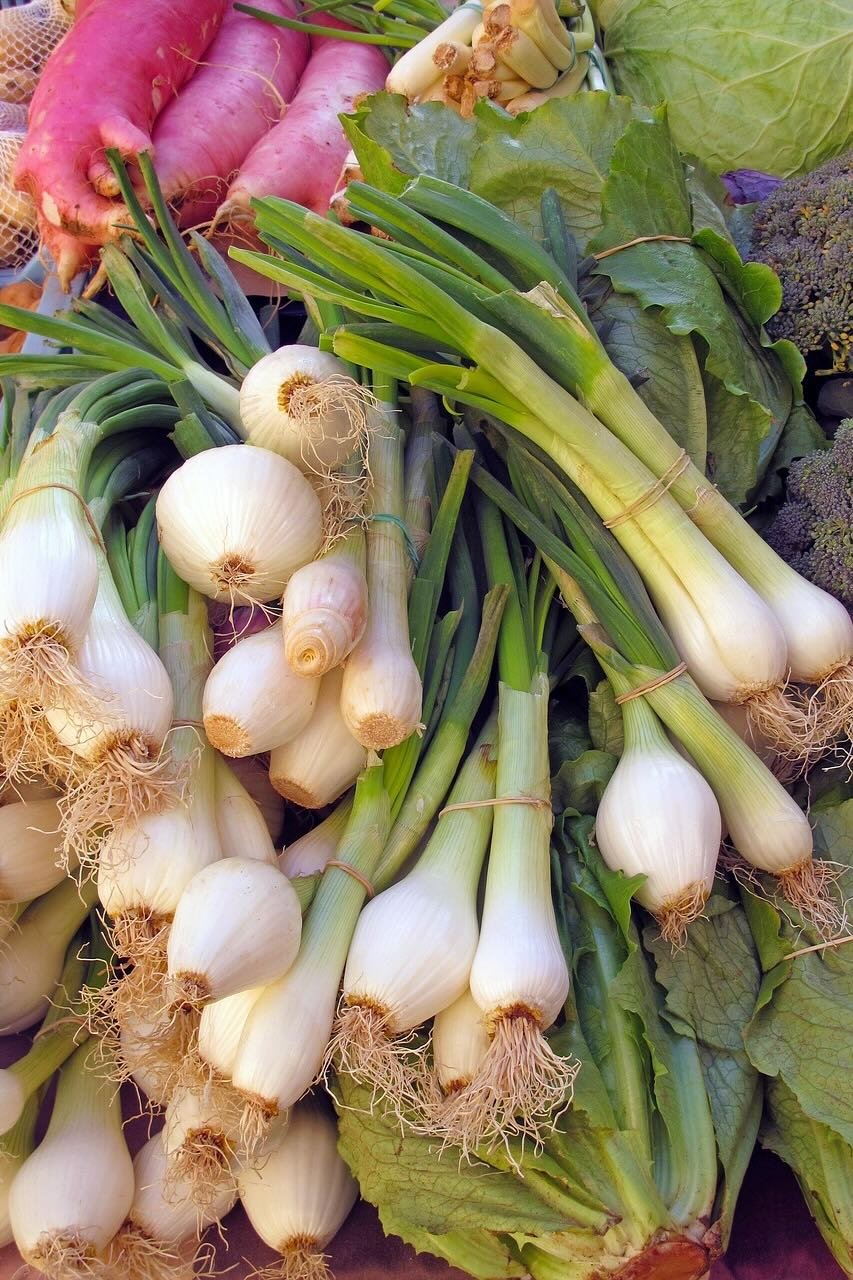Winter cooking demands solid flavours and reliable ingredients, making the choice between bulb onions and green varieties important for keen gardeners. Understanding the distinct characteristics of each type guarantees that your kitchen remains well-stocked throughout the colder months with onions perfectly suited to hearty seasonal dishes.
1. Understanding the Types: Bulb, Storage & Green Onions
Bulb onions (Allium cepa) develop large, rounded storage organs with papery outer skins in yellow, red, or white varieties. These standard onions offer intense, pungent flavours that mellow beautifully when cooked, making them ideal for slow-braised dishes and winter stews. Storage varieties like ‘Senshyu Yellow’ can keep for months when properly cured. Green onions, including spring onions and Welsh onions (Allium fistulosum), remain slender with edible green tops throughout their growing cycle. They provide milder, fresher flavours with tender white bases and crisp green shoots, perfect for both raw garnishing and light cooking applications where subtlety is preferred over intensity.
2. Which Onions Are Best for Cooking & Mixing in Cold-Season Dishes
Yellow bulb onions excel in winter cooking, retaining their robust character through slow cooking methods essential for soups, casseroles, and braised dishes. Their strong cell walls break down gradually, creating rich, caramelised flavours that complement heavy winter ingredients. Recent RHS research indicates that yellow varieties store exceptionally well, maintaining flavour integrity for months. Red onions lose their colour when cooked but contribute subtle sweetness to winter salads and pickled accompaniments. White varieties like ‘Snowball’ offer milder profiles suitable for cream-based soups where gentler onion notes are desired. Green onions work brilliantly as fresh garnishes for winter soups and can be added at the end of cooking to maintain their tender texture and bright colour contrast against darker, heartier winter dishes.

3. Timing, Planting & Growing Considerations Heading Into Colder Months
BBC Gardeners’ World Magazine confirms that autumn planting of overwintering onion sets offers distinct advantages for early summer harvests. Plant Japanese varieties like ‘Senshyu’ from September through November in well-draining soil enriched with organic matter. Spring planting occurs from March through April, requiring soil temperatures above 10°C for optimal establishment. Green onions can be sown successionally from March through September, providing continuous harvests. Soil preparation proves important: incorporate well-rotted compost and guarantee proper drainage to prevent waterlogging during wet winter periods that commonly affect UK growing conditions.
4. Harvesting, Storage & Use Through Winter: Bulb vs Green Onion Strategies
Harvest bulb onions when foliage yellows completely, typically from July through September, then cure in warm, dry conditions with good airflow for 2-3 weeks before storage. Properly cured yellow onions keep until the following spring in cool, dry conditions. Quality onion sets planted in autumn provide earlier harvests and better storage characteristics. Green onions for cooking are harvested continuously from spring through autumn, requiring fresh sowings for winter supplies. Store harvested green onions in the refrigerator for up to a week, or grow winter-hardy varieties under protection for fresh harvests throughout the colder months.
Successful winter cooking depends on choosing appropriate onion types for specific culinary applications, with storage onions providing foundational flavours and green varieties adding fresh, bright notes to seasonal dishes.